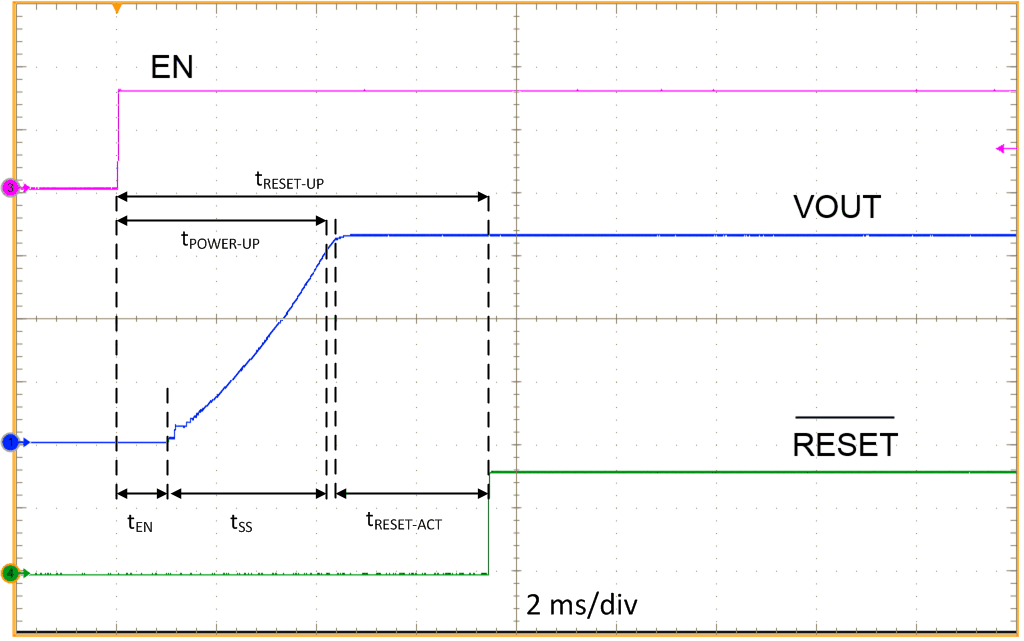ZHCSGY9B July 2017 – March 2018 LMS3655
PRODUCTION DATA.
- 1 特性
- 2 应用
- 3 说明
- 4 修订历史记录
- 5 Device Comparison Table
- 6 Pin Configuration and Functions
- 7 Specifications
- 8 Detailed Description
-
9 Application and Implementation
- 9.1 Application Information
- 9.2
Typical Applications
- 9.2.1 General Application
- 9.2.2 Adjustable 5-V Output
- 9.2.3 Adjustable 3.3-V Output
- 9.2.4 6-V Adjustable Output
- 9.3 Do's and Don't's
- 10Power Supply Recommendations
- 11Layout
- 12器件和文档支持
- 13机械、封装和可订购信息
8.3.2 Enable and Start-Up
Start-up and shutdown of the LMS3655 are controlled by the EN input. Applying a voltage of ≥ 2 V activates the device, while a voltage of ≤ 1.45 V is required for shutdown. The EN input may also be connected directly to the input voltage supply. This input must not be left floating. The LMS3655 uses a reference-based soft start that prevents output voltage overshoots and large inrush currents as the regulator is starting up.
A typical start-up waveform is shown in Figure 12 along with timing definitions. This waveform indicates the sequence and timing between the enable input, output voltage, and RESET. From the figure, the user can define several different start-up times depending on what is relevant to the application. Table 2 lists the timing definitions and typical values.
 Figure 12. Typical Start-Up Waveform
Figure 12. Typical Start-Up Waveform
Table 2. Typical Start-Up Times
| PARAMETER | DEFINITION | VALUE | UNIT | |
|---|---|---|---|---|
| tRESET-READY | Total start-up sequence time | Time from EN to RESET released | 7.5 | ms |
| tPOWER-UP | Start-up time | Time from EN to 90% of VOUT | 4 | ms |
| tSS | Soft-start time | Rise time of VOUT from 10% to 90% | 3.2 | ms |
| tEN | Delay time | Time from EN to start of VOUT rising | 1 | ms |
| tRESET-ACT | RESET time | Time from output voltage within 94% and RESET released | 3 | ms |